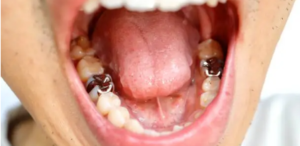Dental fillings do more than repair tooth decay; they also prevent future dental complications like cracked or chipped teeth.
 Before dental fillings Adelaide, your teeth will be numbed using an injection of local anesthetic. Multi-layered composite resin will then be applied and hardened using a special light.
Before dental fillings Adelaide, your teeth will be numbed using an injection of local anesthetic. Multi-layered composite resin will then be applied and hardened using a special light.
Composite Fillings
Human bodies have an amazing capacity for repair; unfortunately, this doesn’t extend to our teeth. When you develop a cavity in a tooth, your dental fillings Adelaide dentist will likely suggest getting fillings quickly to stop further decay and protect against infection. Amalgam and composite resin fillings are both commonly used, although composite fillings have recently been popular due to their natural look and durability.
Composite filling procedures are usually painless; however, an anaesthetic may be needed if your cavity is extensive. Your dentist will use a drill to extract a decayed portion of the tooth, clean and dry the area and etch the tooth surface for an ideal surface for applying a composite. Each layer is applied and then cured using a special light.
Composite resins can fill small or medium cavities, fix chips on front teeth, close gaps and build up worn teeth from bruxism. Furthermore, composite resins can be used to cosmetically alter teeth with veneers – changing their size or shape altogether.
Porcelain Fillings
Porcelain dental fillings Adelaide offer an alternative to silver amalgam fillings commonly used decades ago; made of ceramic material that can be coloured to match your teeth hue, they offer durable yet attractive solutions for patients suffering from cavities or looking to replace old mercury fillings.
Before placing a porcelain filling, the dentist must remove any existing tooth decay or amalgam fillings. After this step, the affected tooth is cleaned and prepared using either drill or air abrasion before receiving temporary filling as protection. At the same time, permanent porcelain inlay or onlay creation begins.
Porcelain fillings are designed to bond directly to a tooth, meaning they can last up to 20 years with proper dental hygiene and regular checkups. They’re an ideal option for patients committed to long-term oral health and willing to pay the additional upfront or overtime costs associated with porcelain fillings.
Gold Fillings
Gold fillings may seem expensive, but they typically last 10-15 years without corrosion and are more durable than silver amalgam fillings when exposed to chewing pressures.
Gold fillings may not appear natural; however, they are an attractive solution for patients who like how they look. Furthermore, unlike composite resin fillings, which may sometimes irritate teeth, gold does not cause as much sensitivity in patients’ teeth as an alternative solution.
But, gold fillings require two visits and are more costly than composite resin or glass ionomer fillings, as well as being more likely to chip more quickly depending on where they’re placed, bond less securely to teeth, are stainless resistant, release mercury toxins into saliva over time and may require less tooth structure be extracted than silver amalgams. Composites offer several advantages over gold amalgams, including being colour-matched closely and needing less structure removal than their silver amalgam counterparts.
Ceramic Fillings
When severe tooth decay or damage has occurred, ceramic dental fillings may be needed to restore it. Ceramic fillings tend to be stronger, more durable and stain-resistant than their composite counterparts but may cost slightly more money upfront.
Ceramic fillings differ from mercury amalgam fillings because they do not emit toxic vapours and are gentler on the remaining tooth structure. Ceramic fillings are the ideal choice for patients who prioritise long-term oral health by paying extra upfront or through top-up dental insurance coverage.
Glass Ionomer Fillings
Glass ionomer cement is made from fluoro aluminosilicate (minute glass particles), acrylic, and a setting agent. These are cream-coloured and blend in well with natural teeth. They are less prone to tooth decay because they release fluoride, a chemical that helps rebuild enamel and dentin.
Conventional glass ionomers have long setting times and are susceptible to dissolution, desiccation, or chemical attack during the set process. They also have low fracture strengths and wear resistance. Resin-modified glass ionomers offer more strength than conventional materials and shorter setting times. They are often used as liners under class I or II resin-based composite restorations to relieve stresses caused by shrinkage during cure. They can also be used as fissure sealants.